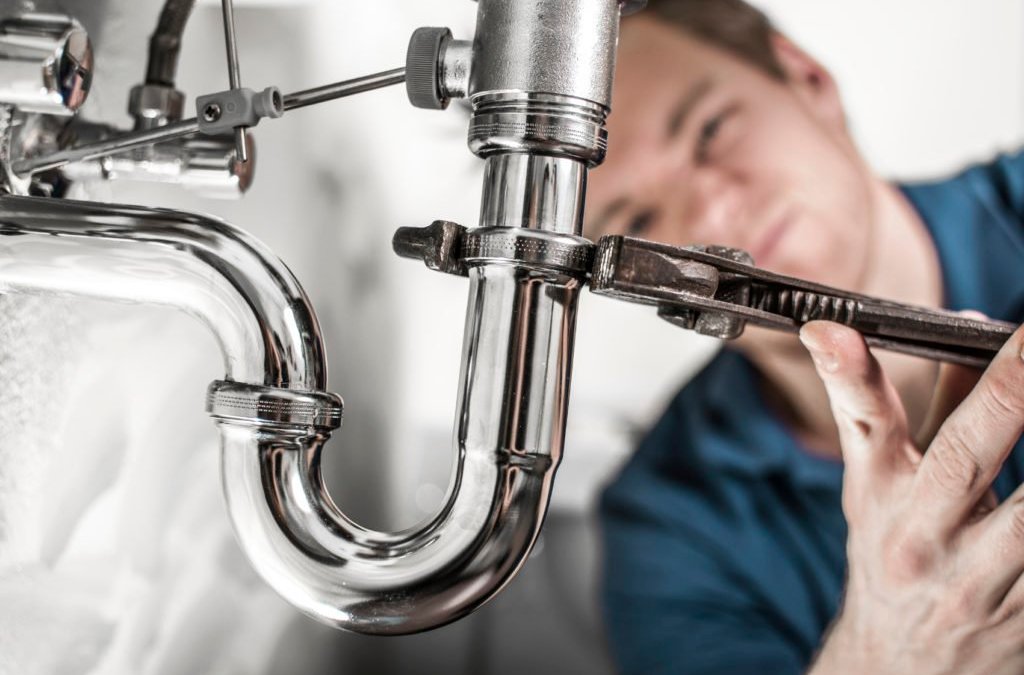We've unearthed this article relating to How Does the Plumbing Work in Your Home? down the page on the internet and figured it made good sense to write about it with you over here.

Plumbing is a necessary facet of any home, in charge of providing clean water for alcohol consumption, cooking, and showering, in addition to removing wastewater securely. Understanding the fundamentals of home plumbing is essential for every single homeowner to make sure proper upkeep, troubleshooting, and, if essential, repair work. In this newbie's guide, we'll cover the basic concepts of home plumbing to aid you become extra accustomed to how it functions.
Water Heating Unit
The water furnace is accountable for heating water for residential use, including showering, food preparation, and cleansing. Common kinds of hot water heater include tank-type hot water heater, tankless (on-demand) water heaters, and heatpump water heaters. The water heater is linked to the water system and delivers hot water to plumbing components as required.
Water drainage System
The water drainage system gets rid of wastewater from your home and lugs it away to a sewage treatment facility or septic system. It includes a network of pipes, fittings, and fixtures that transfer wastewater from plumbing fixtures to the primary drain line or sewage-disposal tank. Appropriate drain is important to protect against obstructions, back-ups, and sewage leaks.
Ventilation System
The ventilation system aids keep correct atmospheric pressure and stop drain gases from entering your home. Vent pipes, likewise known as vent heaps, expand from plumbing components to the roofing system, enabling sewer gases to escape securely outside. Air flow pipelines also enable air to go into the drain system, assisting in smooth wastewater circulation and stopping suction or vacuum results.
Supply Of Water System
The water supply system brings tidy water right into your home from a community water source or a private well. It contains a main water line that attaches to your home's plumbing system, generally situated underground. A water meter determines the amount of water consumed, while a shut-off valve permits you to regulate the circulation of water right into your home.
Plumbing Components
Plumbing fixtures are gadgets that deliver water to various parts of your home and consist of sinks, taps, bathrooms, showers, tubs, and home appliances such as dishwashers and cleaning equipments. Each component is connected to the supply of water system through pipes and fittings and might have its shut-off shutoff for upkeep or emergencies.
Common Plumbing Devices
Having the right devices available is vital for carrying out fundamental plumbing fixings and upkeep jobs. Typical plumbing tools include flexible wrenches, pipe wrenches, pliers, pipe cutters, hacksaws, bettors, augers (or drain snakes), and Teflon tape. Having these devices readily offered can help you deal with minor plumbing problems efficiently.
Standard Plumbing Fixings
While some plumbing repair work might require expert help, lots of common problems can be addressed with basic do it yourself strategies. Learning just how to repair a leaky tap, unclog a drainpipe, change a bathroom flapper, or repair a dripping showerhead can save you money and time on plumbing repair work.
Final thought
Understanding the fundamentals of home plumbing is crucial for each house owner to preserve a secure, functional, and efficient plumbing system. By familiarizing yourself with the water system system, plumbing fixtures, drainage system, ventilation system, common plumbing tools, and standard repairs, you can confidently deal with minor plumbing problems and ensure your home's plumbing system operates efficiently.
Understanding Basics of Home Plumbing System: A Beginner's Guide
The Main Components of Your Home Plumbing System
The Water Supply System
This system is responsible for transporting fresh water into your home. It usually has a main water line that splits into two branches: one directed towards cold water services and the other connected to a water heater for hot water. The pressure is key here; it ensures water reaches all parts of your house.
The Drainage System
Once water has been used, it becomes wastewater that needs to be removed from your home. This is where the drainage system comes into play. It includes all the pipes that carry wastewater and sewage away from your house to sewage treatment facilities or septic tanks.
The Vent System
The vent system prevents sewer gases from entering your home and helps maintain the pressure balance that allows wastewater to flow out properly. These vents usually exit through the roof of your house.
Water Heating System
For those who enjoy hot showers or using hot water for cleaning, the water heater is a crucial part of the plumbing system. It can be a tankless system, which heats water on demand, or a traditional water tank model.
Common Plumbing Problems and Basic Troubleshooting
Plumbing systems, while designed to be durable, can face issues like clogged drains, leaky faucets, or low water pressure. Here are some basic troubleshooting tips:
Clogged Drains
Use a plunger or a plumber's snake to try and dislodge whatever is blocking the drain. Regular cleaning can prevent clogs.
Leaky Faucets
Often caused by worn-out washers or gaskets, these can usually be replaced by someone with basic DIY skills.
Low Water Pressure
This might be due to sediment build-up in your fixtures or a leak somewhere in your water line. Cleaning out aerators or seeking a professional to detect leaks might be necessary.
Preventive Maintenance Tips
Maintaining your plumbing system is key to avoiding emergencies. Regularly check for leaks, avoid disposing of grease down the sink, and have your system inspected by a professional plumber at least once a year.

I discovered that article about What to Know About Plumbing: Basics, Tips, and Insights while browsing the search engines. In case you enjoyed our page please make sure you remember to share it. Thanks a lot for being here. Return soon.
Book Today!